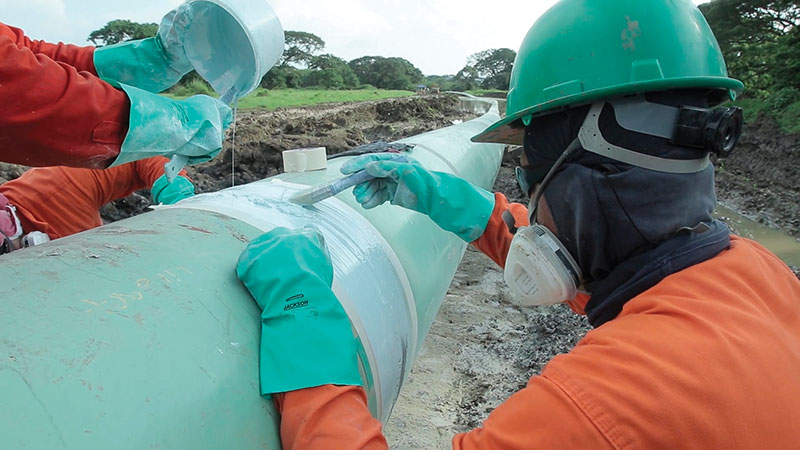December 2020, Vol. 247, No. 12
Features
Construction of Pipeline to Colombia’s Coast Nears Completion
By Mauro Nogarin, South America Correspondent

The demand for natural gas in Colombia will increase by 50% in the next 13 years, from 961 MMBtu/d in 2019 to 1,449 MMBtu/d in 2033, according to a study by the Mining and Energy Planning Unit (UPME).
Adding support to this, the public company Gases del Caribe has said the coastal northwest of the country will require at least 300 MMcf/d of natural gas for industrial, commercial and residential use over the next few years.
With that in mind, Promigas has undertaken construction of the 250-MMcf/d Paiva-Caracolí gas pipeline along the Caribbean coast of Colombia, which was 92% complete in August.
The main pipeline is formed by a 20-inch (508-mm), 51-mile (82-km) underground pipe and will connect the municipalities of Baranoa, Usiacurí, Luruaco, Malambo, Piojó and Sabanalarga and Santa Rosa along its route.
With an 82-foot (25-meter) right-of-way (ROW), the pipe was buried in a trench at depths between 1.9 and 5.9 feet (0.6 and 1.8 meters).
The gas pipeline will connect the new Paiva Compressor Station in the municipality of Santa Rosa with the Caracolí Compressor Station in Barranquilla to integrate Promigas’ transportation infrastructure from Cartagena to Barranquilla.
The greatest difficulties of this important work has been attributable to the instability and complexity of the terrain along most of the route.
From a geological standpoint, the pipeline passes through 32 swampy areas formed by the abundant presence of water and mud, and construction has faced all the logistical difficulties implied by the use of heavy machinery. In other places, where there are narrow ridges and steep areas, other obstacles exist.
Additionally, restrictions applied by the government at the end of April as a result of the pandemic brought an approximate two-month work stoppage for Promigas.
The new gas pipeline shares a short section of the route with the Promigas main gas pipeline, while the rest of the route changes due to the presence of the populated centers and the different protected areas.
From a technical point of view, one of the greatest difficulties in the construction of the pipeline was related to the different types of crossings that had to be made, depending on the geological composition and topography of the terrain.
Along the route, 40 crossings were made on secondary roads that include intermunicipal highways and local roads, in addition to the seven crossings of primary roads through directed horizontal drilling, 159 open-pit crossings and 10 crossings of bodies of water requiring horizontal directional drilling (HDD).
Along the route, six temporary collection centers were installed to store the pipes and equipment necessary for the construction of the work. Each has a separate function: a storage area for the tubes, construction material, chemical substances and storage and separation of solid waste generated.
The new gas pipeline has three sectioning valves to interrupt the flow of gas due to any event that puts the system at risk. Each of the valves has a photovoltaic system with actuators and a SCADA system.
As for the pipeline, 20-inch steel pipe was used with AC SAWL API 5L X65M specification with 20 mils monolayer of fusion-bonded epoxy (FBE) coating with thicknesses of 0.308, 0.369 and 0.5 inch (8, 9 and 13 mm).
The interconnections of the new gas pipeline with the Paiva and Caracolí stations were carried out in accordance with the technical specifications of the hot tap system, which includes the connection of the traps.
Currently, the pipeline, in addition to the 11-mile (18-km) loop that is already in operation, is expected to be online in June 2021.





Comments